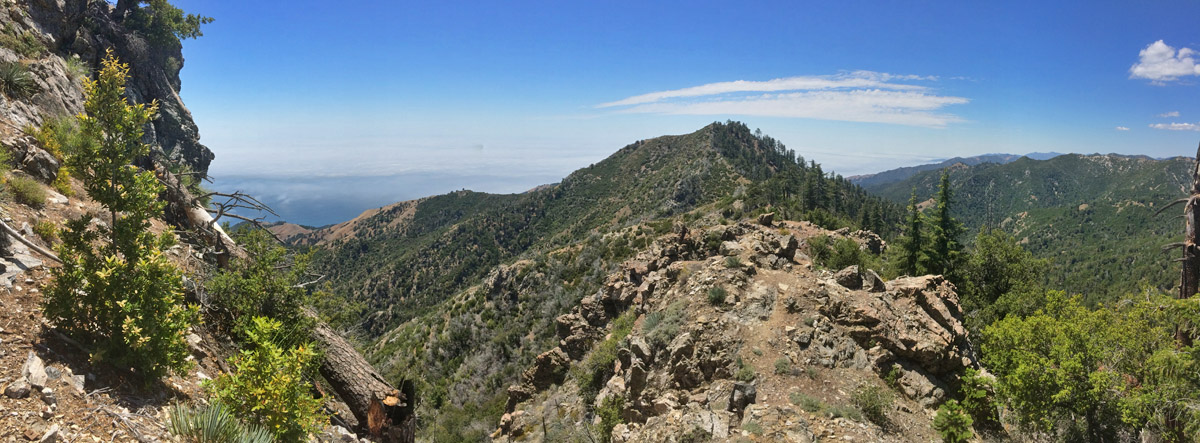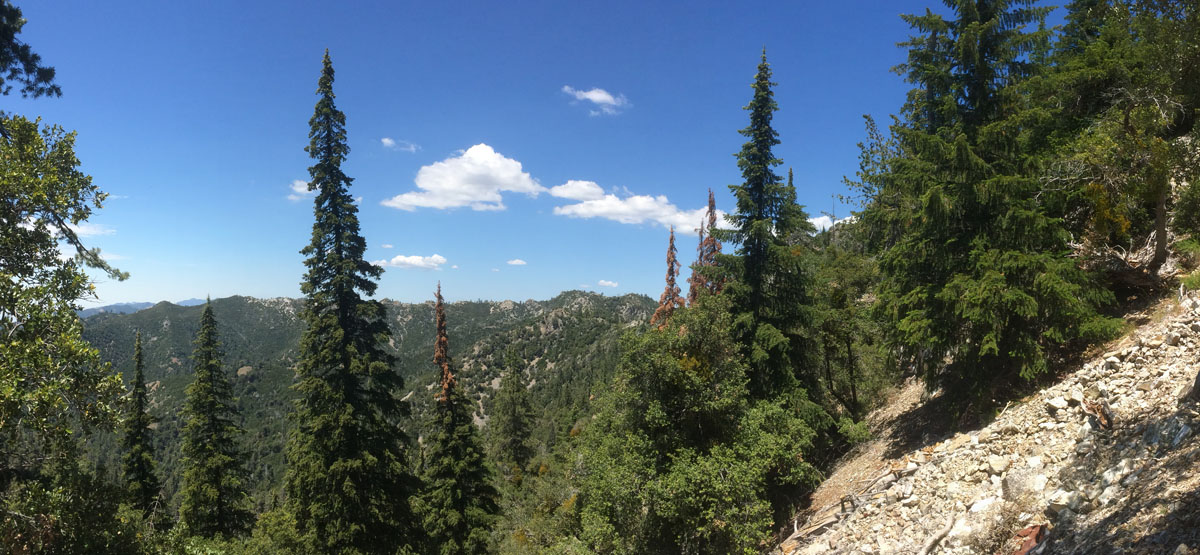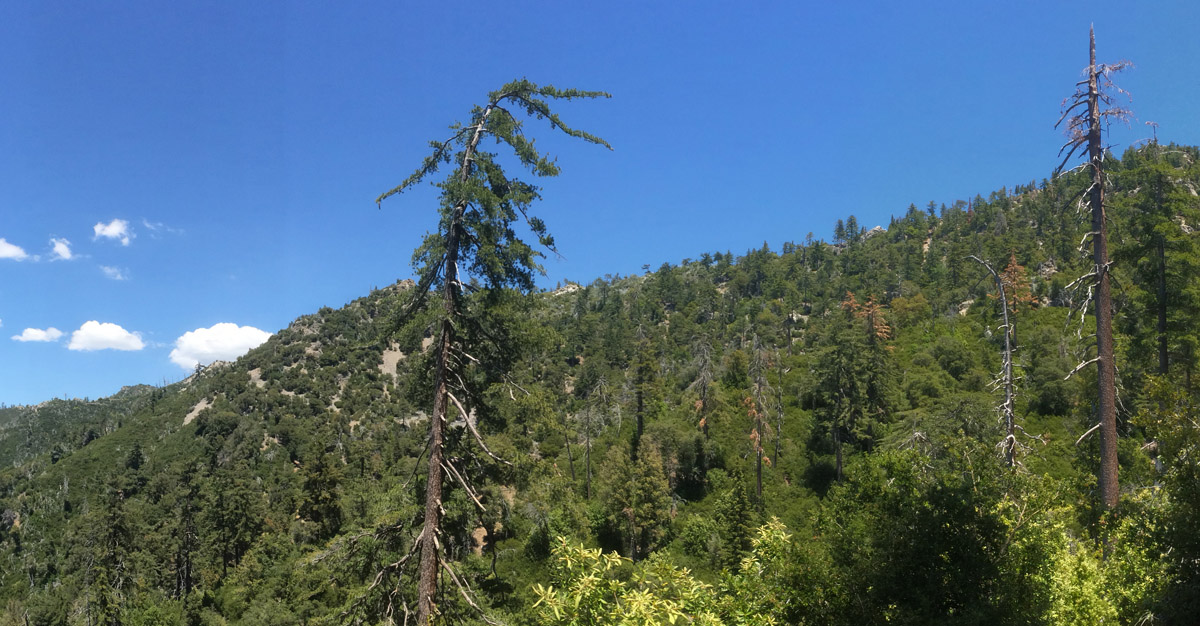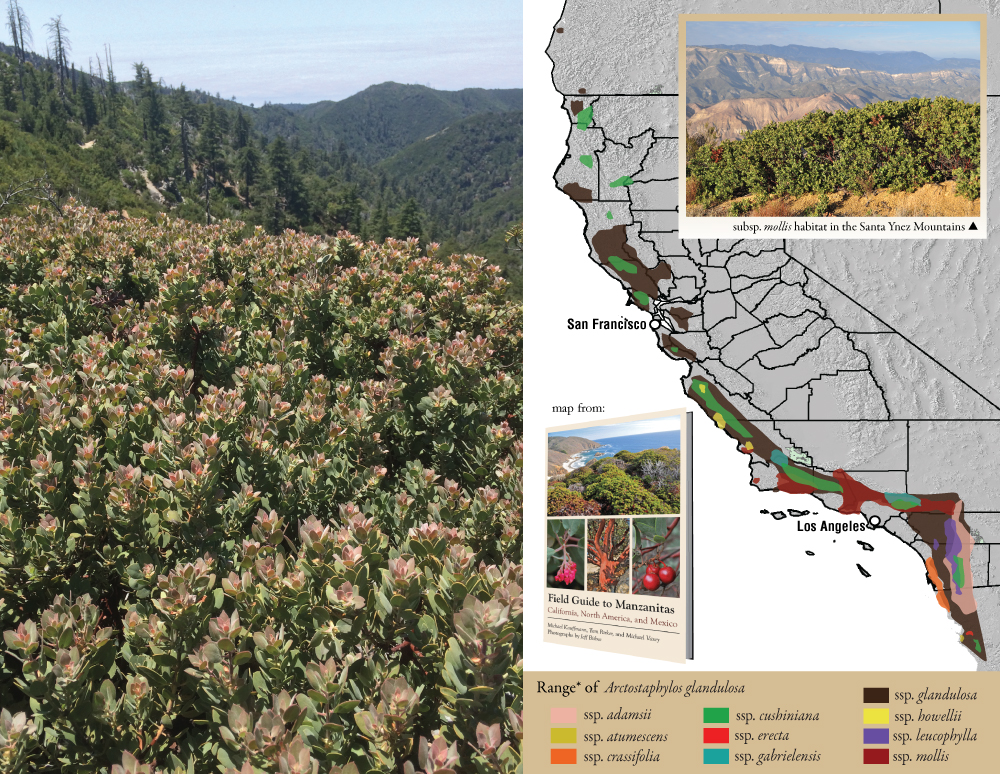Los Padres National Forest – Ventana Wilderness
The Santa Lucia Mountains offer a magical landscape. Uplifted dramatically above the Pacific Ocean, sculpted by frequent fire return intervals throughout the Holocene, and decorated with interesting plants–the landscape tells stories reflected in deep time. Plants both evolutionarily new and old can be found across a variety of vegetation types. Steep north-facing mountainsides offer a rarity here: the absence of high-intensity fire. This happens because the steepness inhibits fuel loading in the understory. These cool microsites nurture two relict conifers–the Santa Lucia fir being one of the rarest firs in the world.

Cone Peak features remarkable relief, rising nearly a mile above sea level only three miles from the Pacific Ocean. This dramatic topography, found across the 100+ miles of the north-south trending Santa Lucia Mountains, promotes an orography wherein a more mesic west-side nurtures plants common further north (like redwoods) and and arid east-side fosters plants with a subtropical-semiarid origin found more commonly to the south (like chaparral yucca).

Santa Lucia Firs are restricted to two habitat types in the Santa Lucia Mountains: rocky north-facing slopes at higher elevations and moist canyon bottoms in lower elevations. Lack of fire seems to be the common denominator. In the higher elevations, where topography is steep, understory fuels are absent–which restricts high intensity fires from entering the conifer groves. Lack of litter also provides mineral soil which are optimal for seed germination. While habitat has been sculpted by fire, there are other threats to the world’s rarest fir. According to David Rogers a wasp causes the destruction of seeds by laying larvae in the developing cones, which ultimately consume the seeds. In the picture above, it appears to me that another pathogen affecting the Santa Lucia Fir. Based on the mortality patterns I witnessed on the north-slopes of Cone Peak, beetles (possibly Scolytus dentatus) might be actively attacking the largest trees causing this mortality. If anyone reading can add to this speculation, please post a comment.

Another relict conifer found in the Cone Peak region is the sugar pine (Pinus lambertiana). Generally a species of interior mountains, pockets are occasionally found near the coast where, again, slopes are steep and understory fuels are absent–which restricts high intensity fires from entering the groves. Like the sugar pines found around King’s Peak, they survive within the Santa Lucia Mountains as relicts from what was a once-broader range–now restricted to specific microsites because of Holocene warming. Here, depauperate individuals on denuded hillsides still thrive even though fire has often burned at high intensities all around them.

Sugar pines survive here, like bristlecone firs, because high-intensity crown fires have been historically absent. Slopes are so steep that litter can not collect at the bases of the trees–it tumbles down slope. Therefore little persists in the understory to fuel surface fires (much less any ladder fuels to carry fires into the crowns). These trees, enjoying these precarious perches, are literally living the high life. But, also like the bristlecone firs, there is mortality in pockets on the north-facing slopes of Cone Peak and beyond. In the picture below, top dieback and brown-outs can be seen. This is probably a combination of drought and bark beetles–but again, if you know more please comment.

Just on the edge of the mixed-evergreen forests dominated by conifers is the perfect habitat for the fire-adapted Eastwood’s manzanita. What new plant exploration blog would be complete without mention of my new “token conifer?”

The majority of the plants in the Cone Peak region are angiosperms. Angiosperms, among other survival strategies, are able to recolonize quickly after extreme events like fires and landslides. But the coniferous exceptions (occasional Coulter and ponderosa pines can also be found) have an ancient mechanism for a less highly derived survival scheme–take purchase, hold fast on steep slopes, avoid high intensity fire, and grow taller than the angiosperm. Happy Plant Exploring.